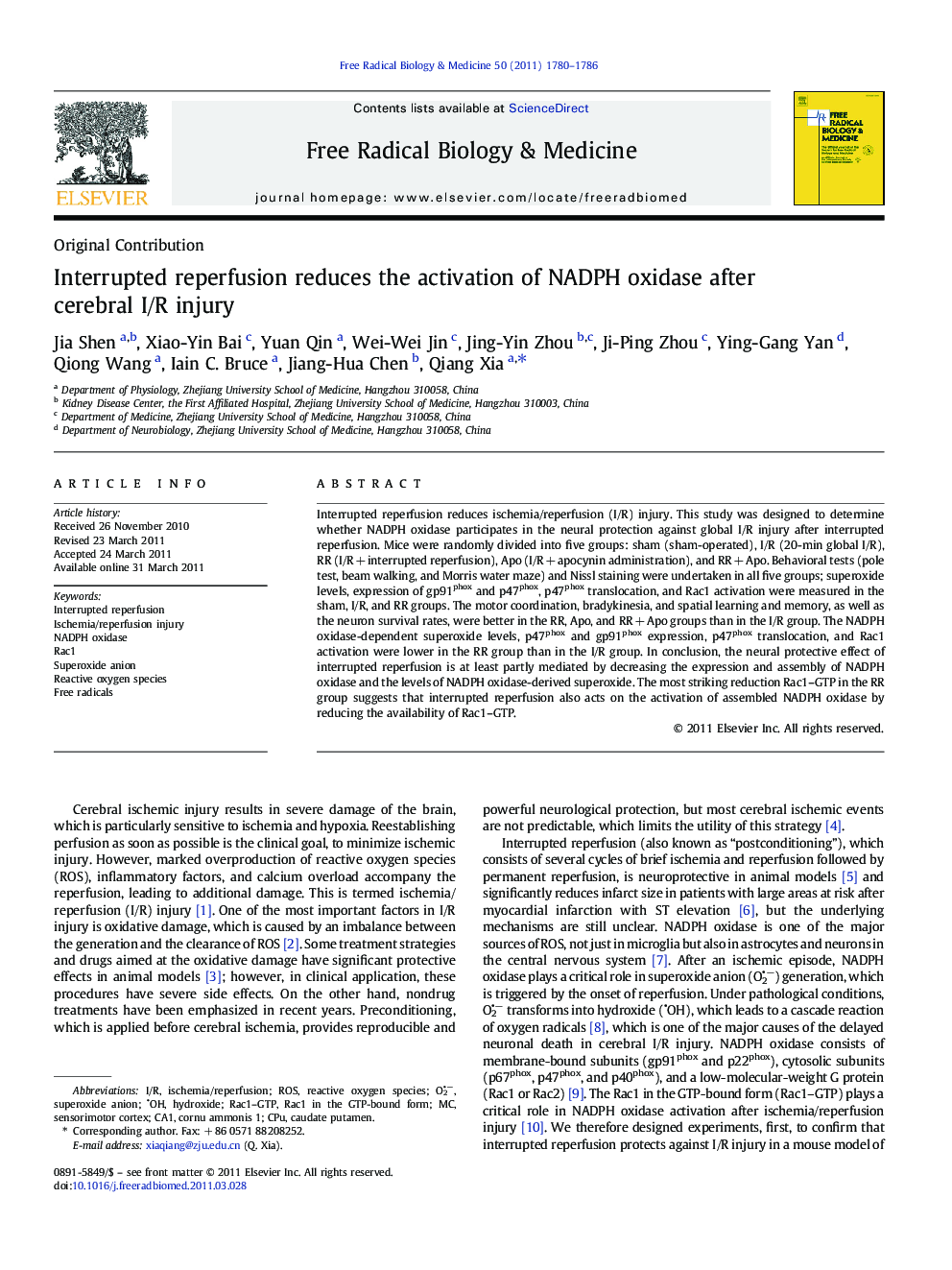| Article ID | Journal | Published Year | Pages | File Type |
|---|---|---|---|---|
| 8271774 | Free Radical Biology and Medicine | 2011 | 7 Pages |
Abstract
Interrupted reperfusion reduces ischemia/reperfusion (I/R) injury. This study was designed to determine whether NADPH oxidase participates in the neural protection against global I/R injury after interrupted reperfusion. Mice were randomly divided into five groups: sham (sham-operated), I/R (20-min global I/R), RR (I/RÂ +Â interrupted reperfusion), Apo (I/RÂ +Â apocynin administration), and RRÂ +Â Apo. Behavioral tests (pole test, beam walking, and Morris water maze) and Nissl staining were undertaken in all five groups; superoxide levels, expression of gp91phox and p47phox, p47phox translocation, and Rac1 activation were measured in the sham, I/R, and RR groups. The motor coordination, bradykinesia, and spatial learning and memory, as well as the neuron survival rates, were better in the RR, Apo, and RRÂ +Â Apo groups than in the I/R group. The NADPH oxidase-dependent superoxide levels, p47phox and gp91phox expression, p47phox translocation, and Rac1 activation were lower in the RR group than in the I/R group. In conclusion, the neural protective effect of interrupted reperfusion is at least partly mediated by decreasing the expression and assembly of NADPH oxidase and the levels of NADPH oxidase-derived superoxide. The most striking reduction Rac1-GTP in the RR group suggests that interrupted reperfusion also acts on the activation of assembled NADPH oxidase by reducing the availability of Rac1-GTP.
Keywords
Related Topics
Life Sciences
Biochemistry, Genetics and Molecular Biology
Ageing
Authors
Jia Shen, Xiao-Yin Bai, Yuan Qin, Wei-Wei Jin, Jing-Yin Zhou, Ji-Ping Zhou, Ying-Gang Yan, Qiong Wang, Iain C. Bruce, Jiang-Hua Chen, Qiang Xia,
